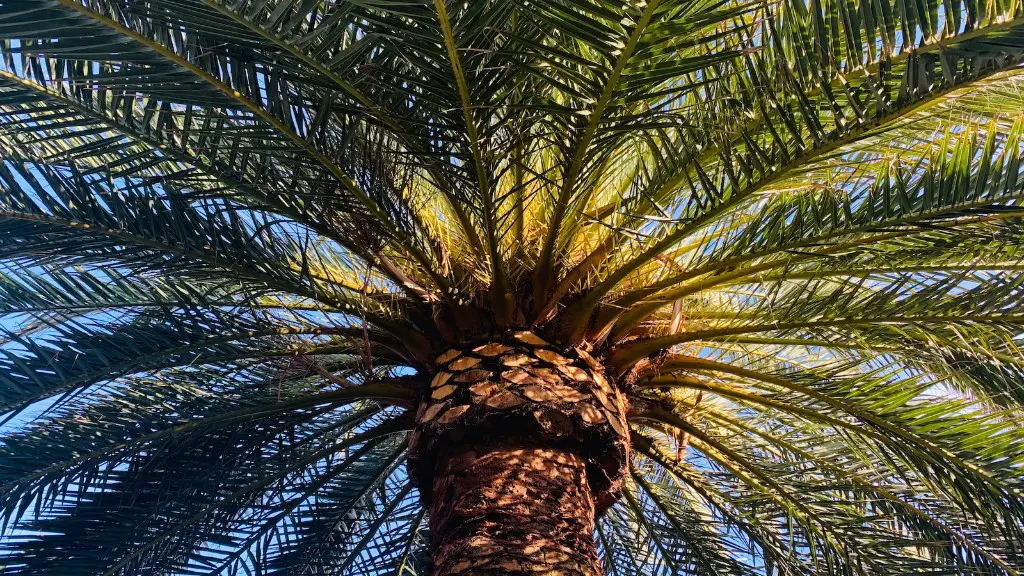Caring for an indoor Meyer Lemon Tree is an easy and rewarding task that can bring joy to your home. This guide explains how to care for your citrus plant, and encourages you to get the most out of your Meyer Lemon Tree. The first thing to do when caring for your Meyer Lemon Tree is to ensure that it’s planted in well-draining soil. When the soil contains too much moisture, it can lead to root rot and other fungal diseases. Secondly, make sure your lemon tree receives plenty of sunlight. If possible, the tree should be placed near a south or southwest-facing window. Position it so it gets 6-8 hours of direct sunlight per day.
Thirdly, Meyer Lemon Trees prefer slightly warmer temperatures than most other citrus trees, so try to keep them at a temperature between 65-75°F. Avoid locations that are exposed to cold drafts, as this can damage the flowers or fruit. Fourthly, the tree needs regular pruning to keep it healthy and encourage healthy growth of flowers and fruit. Pinch off faded flowers and dead branches to encourage the healthy growth of new branches. Finally, remember to keep the soil consistently moist. Water the tree when the top probably an inch of soil becomes dry to the touch.
Meyer Lemon Trees should also be fed regularly. Fertilise your Meyer Lemon Tree during its growing season, which typically lasts from April to October. Generally, use a citrus-specific fertiliser and follow the instructions on the packaging. If you notice that the tree’s leaves are yellowing, it could be a sign that it’s not getting enough fertiliser. When fertilising, be careful not to over-fertilise, as this can damage the tree or your soil.
Meyer Lemon Trees are prone to insect infestations, so make sure to keep an eye out for any signs of infestation on the leaves or the trunk. Some common problems include scale insects, aphids, mealybugs, and whiteflies. Take prompt action to remove any signs of infestation, as this can minimise any damage done to the tree. Remove any infested parts and spray any pests with a neem oil or soap solution.
Finally, it’s important to remember regular cleaning to keep the tree healthy. This includes wiping the leaves with a damp cloth to keep dust levels down and prevent any pests from taking hold. You can also use a diluted mixture of rubbing alcohol and water to protect the leaves from disease.
Soil Requirements
The key to having a thriving Meyer Lemon Tree is to have the correct soil mixture. It is important to have well-draining soil, as when the soil is too wet, it can lead to root rot. Therefore, it is recommended to mix up the soil with compost, soil mix, perlite or sand to ensure proper drainage. Additionally, it is essential to pick a pot or container that is big enough to accommodate the root system of the tree. If the root system is not given enough room, it can prevent the tree from getting adequate nutrients and water, thus reducing growth and health.
Pollination
In order to produce fruit, your Meyer Lemon Tree needs to be pollinated. The easiest way to accomplish this is by hand. You can use a small brush to move the pollen from the male flower to the female flower. Alternatively, you can use a pair of tweezers to lightly transfer the pollen from one flower to the other. This process needs to be done every few days for the entire blooming season.
Pruning
Prune your Meyer Lemon Tree regularly to keep it healthy and encourage new growth and flowering. Remove any dead or diseased branches, and pinch off any fading flowers. Additionally, you can use pruning shears to shape the tree and make sure it looks good. The aim of pruning is to maintain a healthy growth pattern of the tree while controlling its size.
Harvesting
When you see your Meyer Lemon Tree laden with yellow, ripe lemons, it’s time to harvest. Harvest them when they feel plump and full, or when you can easily twist them off the branch. Don’t worry if your lemons are a brighter yellow color, as this just means they are very ripe. Meyer Lemons are typically harvested in autumn and winter, but they can be harvested throughout the year.
Troubleshooting
If you have been following all the steps outlined in this guide, yet your Meyer Lemon Tree still isn’t showing signs of growth and health, there are some other factors that you should consider. Firstly, check that you’re not over-watering the tree, as too much water can lead to root rot. Secondly, make sure the tree is receiving enough sunlight, as this is essential to the growth of the lemons. Lastly, check that the tree is fertilised correctly and avoid over-fertilising, as this can be damaging.


